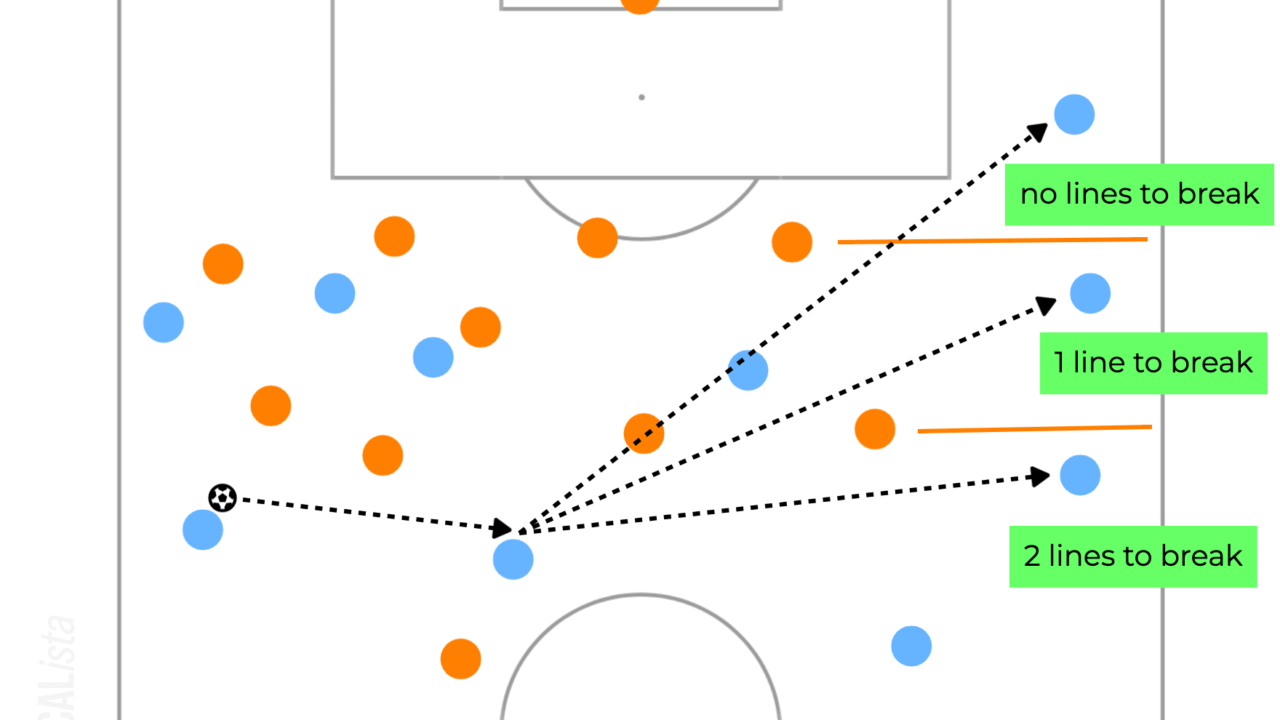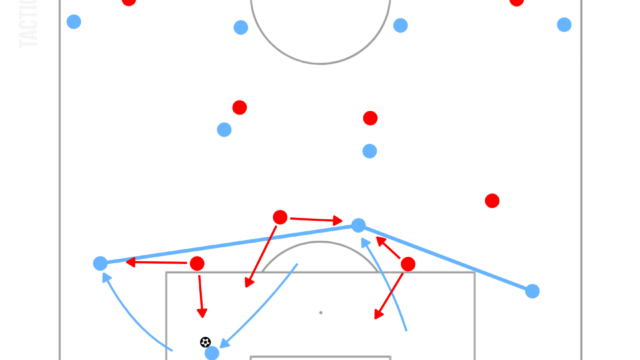Introduction
Switching play is a one of the most important factors in attacking. Basically, the most effective play is progressing the ball vertically towards the opposition goal. However, it is obviously impossible because the opposition players try to stop it. Therefore, playing the ball horizontally to find a gap to play through is vital in attacking.
In this article, some purposes of switching play are going to be discussed first and the effective methods depending on the purpose are going to be analysed.
The Purpose of Switching Play
First of all, the purposes of switching play are going to be discussed. It was already mentioned that the ball should be played horizontally to find a gap to play vertically. However, the required size of the gap depends on the purpose of each team.
Basically, there are two types of purposes when switching the ball. Some teams want the maximum advantages by switching the play but the others do not need such a big space and if the gap is bigger than at least the size of the ball to be played through, that is enough. The former teams tend to keep the width during their possession while the latter teams tend to attack with minimum width.
Firstly, the aim of the teams switching the ball to create the maximum advantage is to make an isolation situation on the other flank. They drag the opposition players into the ball side and play long to the other side to let the winger take on the opposition fullback. After the switching play, there is likely to be a 1v1 situation in a huge area. In the opposition final third, this is one of the maximum advantages for the attacking team.

Secondly, the objective of the teams trying to play through as soon as possible is to find a gap to break a line. Therefore, the ball played horizontally is short and will be played through quickly. This is played in a small area so the probability of losing the ball is higher but it is easier to regain it by immediate pressure around the ball.

In the next chapter, the effective ways to switch the ball of both purposes will be analysed.
How to Switch the ball?
Before beginning with analysing the effective ways, it is important to understand what a bad switching play is. While switching the play is important, it is obviously more important to break down the opposition defensive block within the ball side if possible. For example, if there is an overload for the attacking team, there are no reasons to switch the side to attack. Additionally, if the attacking team switch the ball without using the advantage in the ball side, they need to attack in the flank where the opposition defenders have advantages. This would be a trigger for the opposition defenders to press aggressively.

Therefore, it is vital to think about the possibility to break down the opposition defensive block without switching the ball before switching the play.
Then, the effective ways to switch the ball depending on the purposes are going to be discussed.
To Get a Maximum Advantage
Firstly, how to gain the maximum advantage by switching the ball is going to be analysed. The key thing is dragging the opposition player into the ball side and playing to the other side as quick as possible.

As it was mentioned earlier, if it is possible to break down the defensive block in the ball side, it should be the first option. Additionally, dragging the opposition out cannot be the purpose of the possession. Trying to play through the line is the objective of the possession and the opposition defenders gather around the ball to prevent from being played through. Consequently, the opposition defenders are dragged into the ball side with vacating a space in the other side.
In terms of how to switch the ball, lofted long balls are often used. However, during the ball travelling to the other side, it is possible for the opposition defenders to shuffle across to prevent from being played through. Therefore, the ball switching the side should break at least a line to get the advantage even though the opposition back line can successfully shuffle over. This can reduce the number of the defensive lines to break so it becomes easier to exploit the flank.

However, if the opposition team has an additional defender at the back with a wingback or winger dropping back, it is difficult to play to the winger as being closed down by the opposition defender quicker. On the other hand, defending with back 5 means there is a smaller number of players in the midfield line or forward. Therefore, it is important to break the midfield quickly to attack the back line.

The key thing is that the player receiving the switched ball should keep narrow to prevent the opposition midfielders from shuffling over. If the player keeps the maximum width, the opposition midfielders can shuffle across and close him down. Therefore, the player who receives the switched ball should be positioned himself in the minimum width with at least breaking the line.
To Find a Gap to Play Through
Secondly, how to switch the ball to find a gap to play through is going to be analysed. The focus is how to receive the ball in the entrance of the gap. The movements of the player to receive the ball can be divided into two categories. The first one is coming close to the player possessing the ball.

Considering 2v2 in the wide area, by coming close to the player on the ball, it is possible to make 2v1 temporary. Then, the player can receive the ball in front of the gap between two players and play through by a first-time pass.
Another way is moving away from the ball. This can be used in the situation where the defenders are narrow and make the gap close.

In this case, if the player next to the teammate with the ball comes close to the ball, it becomes hard to play through because the gap is extremely narrow. On the other hand, if the player moves away from the ball to find the different gap, it is possible to play though easily. Moreover, in this case, the ball is played through the gap in the middle of the opposition midfield line so it will be a better chance.
Overall, for the teams who want to play horizontally just to find a gap to play through, the movement to receive the squared ball is vital.
Conclusion
In conclusion, there are mainly two types of purposes to switch the ball. Additionally, how to make effective switches was discussed depending on the objectives. However, it is also important to think about the possibility to break down the opposition defensive block without switching the ball to avoid bad switches. Thank you for reading.



